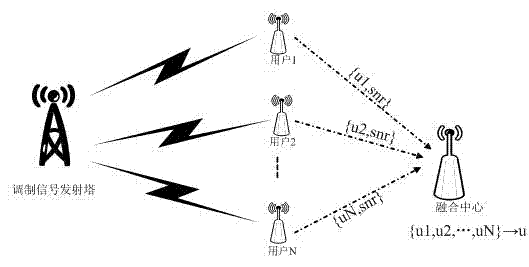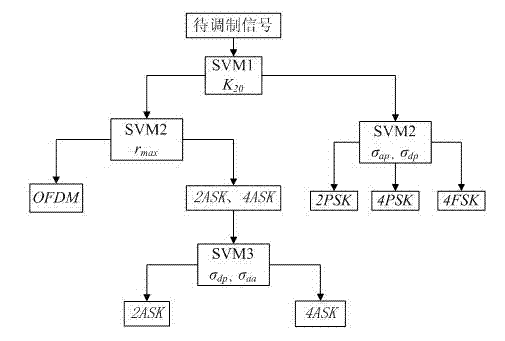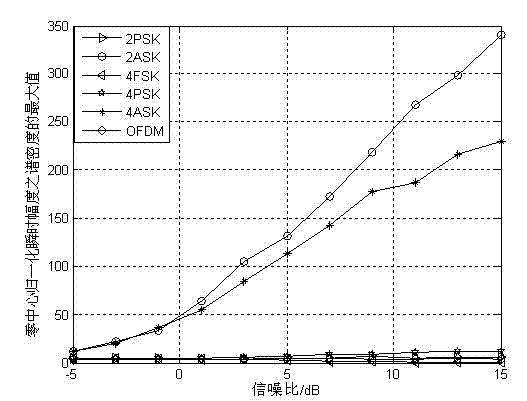Cooperative modulation signal identifying method based on data fusion of decision layer
A technology of data fusion and signal modulation, applied in the direction of multi-carrier systems, etc., can solve the problems of unstable modulation recognition results, no consideration of mutual influence, and low recognition rate, so as to reduce the number of support vector machines, improve classification efficiency, and improve recognition rate effect
- Summary
- Abstract
- Description
- Claims
- Application Information
AI Technical Summary
Problems solved by technology
Method used
Image
Examples
Embodiment Construction
[0034] Below in conjunction with accompanying drawing, the technical scheme of invention is described in detail:
[0035] Such as figure 1 As shown, node 1, node 2 ... node N are modulation signal identification nodes scattered in different geographic locations. After each node receives the signal, it extracts the characteristic parameters of the signal, uses the pre-trained support vector machine based on binary tree decision-making to obtain the recognition result, and then the judgment result and receiving signal-to-noise ratio Send it to the fusion center, and the fusion center can receive the judgment results of N nodes, and then obtain the final judgment result according to the data fusion criterion of the maximum posterior probability.
[0036] The cooperative modulation signal recognition method based on decision-making layer data fusion, through the cooperation of N receiving nodes to complete the The identification of these six modulation methods includes the f...
PUM
 Login to View More
Login to View More Abstract
Description
Claims
Application Information
 Login to View More
Login to View More - R&D
- Intellectual Property
- Life Sciences
- Materials
- Tech Scout
- Unparalleled Data Quality
- Higher Quality Content
- 60% Fewer Hallucinations
Browse by: Latest US Patents, China's latest patents, Technical Efficacy Thesaurus, Application Domain, Technology Topic, Popular Technical Reports.
© 2025 PatSnap. All rights reserved.Legal|Privacy policy|Modern Slavery Act Transparency Statement|Sitemap|About US| Contact US: help@patsnap.com



